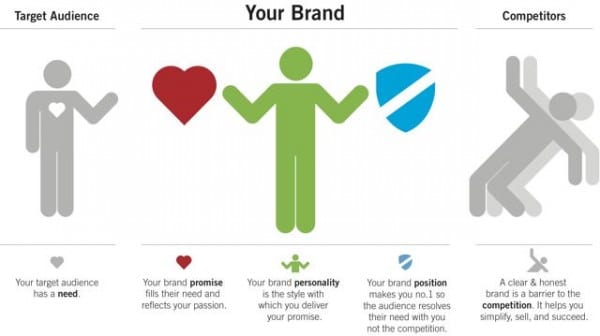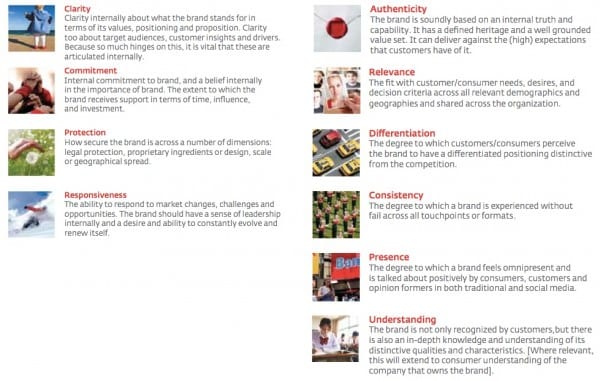An ineffective brand strategy is likely blocking your success in digital marketing, here's 3 factors for success
We take it for granted that digital channel management is a core marketing activity now, and yet our own recent survey highlighted that a digital strategy isn’t a ubiquitous component of everyone’s marketing plan, as much as we might think it ought to be. But, let’s say that it is, that we’ve all got a solid digital strategy, that we’re using frameworks like RACE - are we done? I’d suggest far from it - and that there is a bigger issue at hand blocking your digital success, which is often surprisingly "missing-in-action" and that’s a coherent brand strategy.
In fact, brand strategy is an obvious yet secret ingredient for modern digital marketing which most companies that I meet or work with simply don’t have an eye on, there’s no solution in place and amazingly some are barely thinking about it, if at all.
Defining a brand strategy, in brief
I’m not going to delve into the detail here, but to share as context as to what I understand, a brand is an external device, more than a recognisable name and logo, an internal identity giving it clarity as to what it is and what it does, the brands purpose including qualities and characteristics - the things that tend not to change. And lastly, the brand has a strategy to support its commercial growth and to guide its implementation; strategies can and should change. This last element is the bit that is most useful to inform your digital strategy.
A coherent brand strategy will, describe elements such as those below and importantly be questioned and improved as the market changes. Digital media give new opportunities to refine the brand strategy. Many brand experts and books will have variations on these very broad themes:
- Customer community, those who we serve, engage and transact with
- Market position and differentiation
- Product and service development
- Internal comms and culture, including employment, people and environment
- External marketing communications and proposition

A common brand model (we liked the simpliciity and style of this one) - Distility Brand Strategy model
Brand strategy enables a bottom-line, ROI, focus
Without designing the brand strategy, how can you expect to make the right decisions, consistently? To execute and deliver communications and promotions digitally? I found that I’m not alone in thinking this:
“There is no viable digital strategy that isn’t integrated into your larger brand and business strategy.” Jeff Mancini, Senior Director of Digital Strategy, Interbrand.
We’re talking brand as a means to enable strategic and marketing integration. A consistency of focus and delivery where the brand strategy provides filters for decision making across all channels, content development and how platforms such as social media are used. For example, a professional services company will likely use Facebook for different reasons than a confectioner such as M&Ms...
To best drive choice, create loyalty, and command a premium in the marketplace, organisations would do well to consider that they are functioning in a post-digital era. This means effective integration of your brand across multiple on and offline touch-points is a pre-requisite to success, digital marketing is increasingly a dated if not misleading term. Consumers and users have more, integrated touchpoints than ever across ‘digital’, ‘offline’ and ‘mobile’ - where does each end? With mobile, and the work by Google on ZMOT we might say that we’re entering a post-digital era. We also have to foster community, manage user interaction and user-generated content as part of a growing brand footprint in on social platforms. The disparate nature of digital requires we know and leverage our brand as the primary asset behind marketing planning, agree? Is your organisation using digital in a way that aligns with your larger positioning?
I like Interbrand’s 10 components of brand strength as a means to start to see and shape your brand’s value, I’ve posted a graphic below too:

Interbrand 10 brand strengths
3 success factors for developing your brand strategy
It’s time to focus on brand to drive both business and strategic thinking. Brand is the driver in your business. And digital is a tool-set for activating that brand. The stronger your brand, the better position you are in to deliver on these three essentials.
- 1. Promises and truths: Start internally with the essential basics, understanding clearly who you are, what you’re about, your purpose and what that means for internal culture, product and external communications. Don’t just focus the external positioning and external brand expressions, this misses the whole point.
- 2. Focus on connections: Think beyond social channels and YouTube. Think of the total online consumer experience, leveraging a wide range of digital tools as is relevant to your brand and resources. These are real brand touchpoints including websites, apps, social media channels, from online ads to billboards, broadcast, retail and real estate. Your customer does not see a difference in “channel”, building a seamless experience of your brand that fits the audience’s new reality is now essential.
- 3. Deliver on those promises to achieve ROI: Seeing this through is real brand differentiation, a tangible means to gain loyalty and representing the best consumer behaviour change that we can hope to evoke, and a means to command a premium in the marketplace - that’s a bottom-line ROI to you and I.
What say you? Anything that you’d add or challenge in the comments?
source http://www.smartinsights.com/online-brand-strategy/brand-development/brand-positioning-strategy/
No comments:
Post a Comment